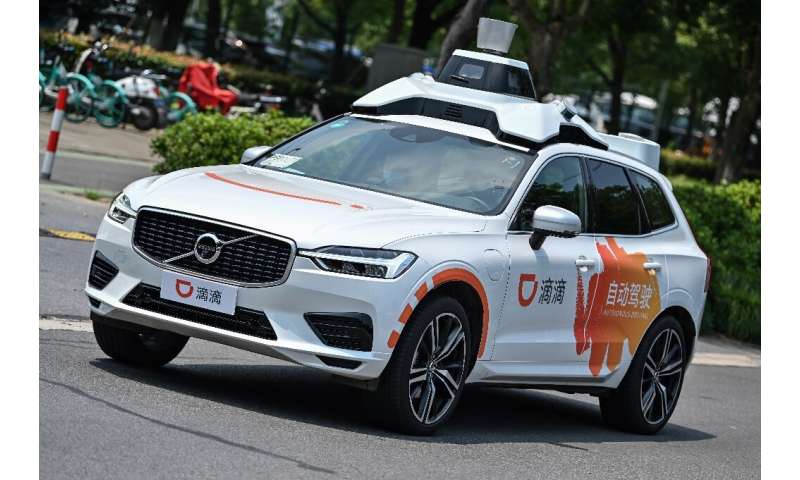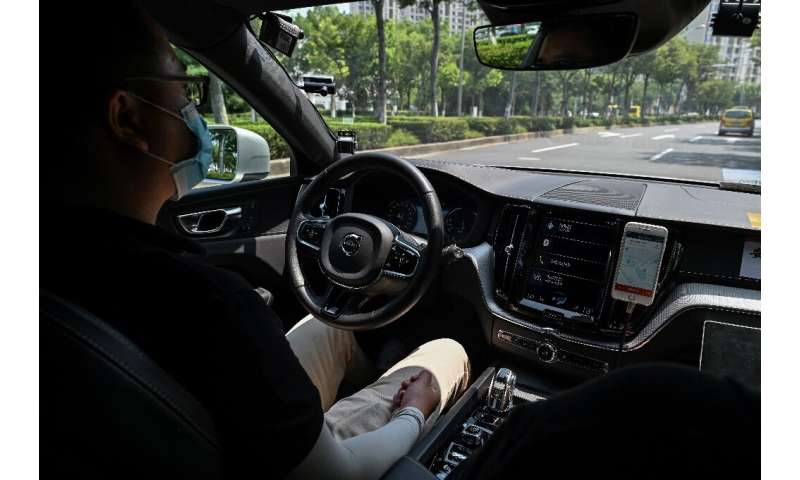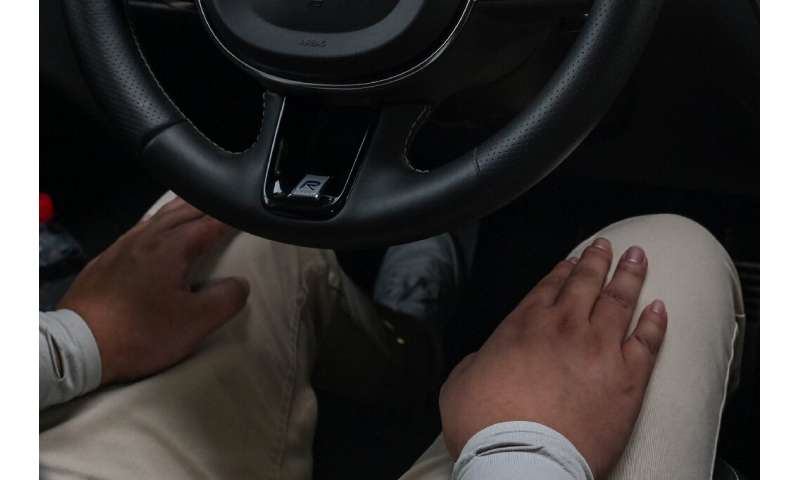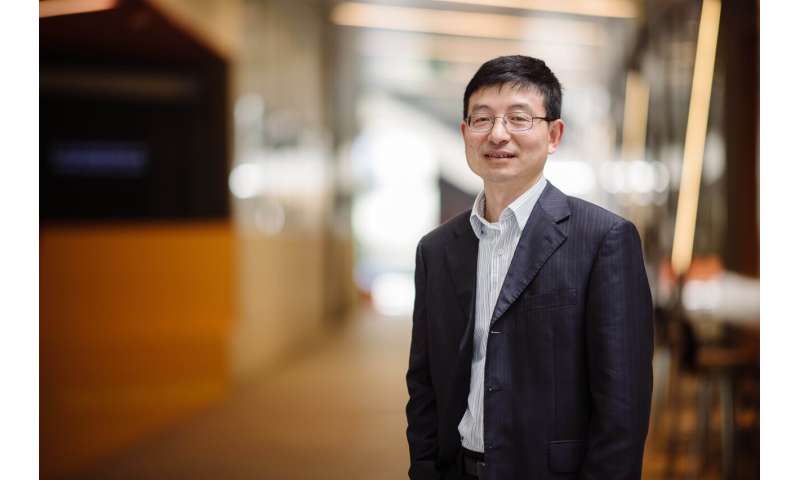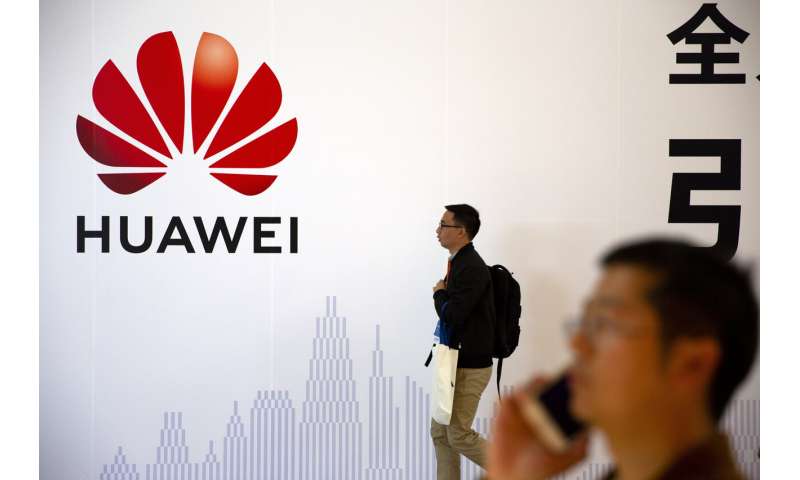YOU CAN ALWAYS LEAVE A TIP IN CASH OVER AND ABOVE THE GRATUITY ON THE BILL THE CUSTOMER BEING A WORKER IS BEING CHEAP WITH THEIR MONEY, NOT SO; ACTUALLY ITS DOCTORS, LAWYERS, TEACHERS, ETC. AND OTHER PROFESSIONALS by Becky Kramer, Washington State University
 North American customers spend about $66 billion annually on tips at restaurants and other establishments. Credit: Washington State University
North American customers spend about $66 billion annually on tips at restaurants and other establishments. Credit: Washington State University
Automatic gratuities leave restaurant patrons with a bad taste, even when the meal and the service were excellent, new research from Washington State University indicates.
"We thought if service quality was high, people wouldn't care if an automatic service charge was added to their bill," said Jeff Joireman, the study's coauthor and professor and chair of the Department of Marketing and International Business at the Carson College of Business.
But whether customers had a good experience or bad one, they reacted negatively when their bill came with a mandatory tip, preventing them from leaving the gratuity themselves. Surprisingly, customers with the best dining experiences expressed the most dissatisfaction with automatic gratuities. The research was published in Journal of Services Marketing and was based on four separate studies."People think non-voluntary tipping systems are unpopular because customers can't punish servers for poor quality service," Joireman said. But when the service was high, "we found that customers were equally frustrated by non-voluntary tipping—this time because they couldn't reward their servers."
In both service scenarios, customers said they were unlikely to patronize the restaurant in the future.
Non-voluntary tipping systems take control away from the customer, said Ismail Karabas, assistant professor of marketing at Murray State University and lead author of the research, which was part of his doctoral dissertation at WSU.
"Being able to reward the server makes customers feel good," Karabas said. "That's part of the restaurant experience."
When customers lose control of the tip, "their ability to show their gratitude has been blocked," he said. "They have fewer positive feelings about the restaurant experience, and they're less likely to eat there again."
Automatic gratuities growing in restaurant industry
North American customers spend about $66 billion annually on tips at restaurants and other establishments. Although voluntary tipping is still standard practice, a growing number of restaurants are moving toward automatic gratuities, Karabas said.
For restaurant owners, the switch to automatic gratuities is often about fairness, he said. They want to divide tips between servers and the kitchen staff, rewarding the entire team and equalizing pay.
"The person who cooks your meal may be working harder than the server, but servers end up making quite a bit more money when you add in the tips," Karabas said. "That's led to turnover of kitchen staff, which is a concern in the restaurant industry."
While the intent of using automatic gratuities to equalize pay and retain employees is laudable, restaurant owners and managers should be aware of the drawbacks, he said.
"High-quality service does not compensate for the negative customer response to a non-voluntary tipping system," Karabas said. "Managers may think 'We're fine as long as we provide good service,' but we found that's just not true."
Exploring other ways to reward good service
PAY THEM MORE
GIVE THEM REGULAR HOURS
AND BENEFITS
Restaurants that switch to automatic tipping could explore other ways to help customers keep their sense of control, the researchers said.
"Based on what we know about blocked gratitude, I would look for ways to give customers the feeling they are still the ones leaving the tip, even though it's added automatically," Karabas said. "It could be as simple as saying, 'You tipped your server 18% today. Thank you.'"
Restaurants could also encourage customers to reward their servers through other means, such as providing feedback on comment cards, voting for a server of the month, or even adding a separate line on the bill for an extra tip, the researchers said.
But restaurants should be careful about perceptions, according to Karabas, who said additional research is needed on alternate ways to reward servers. Some customers might react cynically to an extra line on their bill for an enhanced tip.
"You don't want customers to think you're being sneaky and trying to trick them into tipping twice," he said.
Explore further Servers perceive well-dressed diners as better tippers, study finds
More information: Ismail Karabas et al, The role of blocked gratitude in non-voluntary tipping, Journal of Services Marketing (2020). DOI: 10.1108/JSM-03-2020-0082
Provided by Washington State University
AND HERE IS A SOLUTION
How to boost tips and donations with the dueling preference approach
by Matt Weingarden, American Marketing Association
Researchers from University of Missouri-Kansas City, University of Wisconsin-Milwaukee, and University of Pennsylvania published a new paper in the Journal of Marketing that examines the effectiveness of what they call "the dueling preferences approach" on prosocial giving.
The study, forthcoming in the Journal of Marketing, is titled "Penny for Your Preferences: Leveraging Self-Expression to Encourage Small Prosocial Gifts" and is authored by Jacqueline Rifkin, Katherine Du, and Jonah Berger.
BallotBin, a UK-based company, designs custom bins for the disposal of cigarette butts. These "ballot bins" have a fascinating feature: They pose a question and provide two bin compartments, each labeled with a possible answer to the question. Smokers can then answer the question through the disposal of a cigarette butt into either compartment. For example, one recent "ballot bin" in London asked smokers whether flying or invisibility is the better superpower, allowing them to express their preference by depositing their cigarette butts in one of two labeled compartments. This set-up can be found in a variety of other settings designed to increase prosocial acts. Cafés have started to position two tip jars rather than one, asking patrons whether they prefer Star Trek or Star Wars. Similarly, the ASPCA asked people to donate money by expressing their preference for cats or dogs ("Vote for your Paw-sident").
This set-up, in which the act of giving is framed as a choice between two options, is called the "dueling preferences" approach. But the question remains: Is the dueling preference approach really more effective at increasing prosocial giving than traditional approaches? And if so, why?
The research team set out to answer these questions. They conducted initial experiments in real cafés and with real charities using several different "duels" (summer vs. winter, mountains vs. beach, chocolate vs. vanilla ice cream) and discovered that the dueling preferences approach can indeed be more effective than traditional approaches at increasing small prosocial gifts. In particular, the dueling preferences approach increased people's likelihood to tip/donate and how much money they gave.
Next, the researchers sought to understand why this approach works. Several follow-up studies indicate this approach works because it provides people with the opportunity to say something about who they are. Du explains, "People love to talk about themselves and share their opinions. In fact, the parts of the brain that light up when we get to share our opinions also light up in response to finding $10 or getting a sweet treat. This fact about human psychology ultimately makes the dueling preferences approach an inherently attractive and motivating opportunity. People are willing to give money to share what they believe in."
Of course, the dueling preferences approach must be implemented tactfully. People may be willing to give money to share what they believe in, but what if a duel captures an issue people don't believe in? As Rifkin described, "When we tested a duel that asked people's preferences for the letter "A" vs. "B"—a relatively uninspiring issue—we were not able to increase prosocial giving. Similarly, when we tested a duel that was interesting to some, but not to all—one's preference for pets—we found that the duel only increased giving among those who found the issue to be important to them. Also, people do not always want or even need to express themselves." While the inherent need to say something about who we are is critical for harnessing the power of dueling preferences, people differ in what and when they want to share. As a result, it takes some thought to figure out exactly what options to choose, when, and among whom to deploy this approach.
Overall, those interested in increasing prosocial giving can benefit by leveraging the flexibility and ease of implementation of the dueling preferences approach. Ultimately, if managers can effectively harness people's desire to express themselves, this approach can be a powerful tool for increasing prosocial giving. The magic of dueling preferences lies in its ability to leverage any valued identity—whether a Star Trek fan, chocaholic, or lefty—to increase prosocial giving.
Explore further
 North American customers spend about $66 billion annually on tips at restaurants and other establishments. Credit: Washington State University
North American customers spend about $66 billion annually on tips at restaurants and other establishments. Credit: Washington State UniversityAutomatic gratuities leave restaurant patrons with a bad taste, even when the meal and the service were excellent, new research from Washington State University indicates.
"We thought if service quality was high, people wouldn't care if an automatic service charge was added to their bill," said Jeff Joireman, the study's coauthor and professor and chair of the Department of Marketing and International Business at the Carson College of Business.
But whether customers had a good experience or bad one, they reacted negatively when their bill came with a mandatory tip, preventing them from leaving the gratuity themselves. Surprisingly, customers with the best dining experiences expressed the most dissatisfaction with automatic gratuities. The research was published in Journal of Services Marketing and was based on four separate studies."People think non-voluntary tipping systems are unpopular because customers can't punish servers for poor quality service," Joireman said. But when the service was high, "we found that customers were equally frustrated by non-voluntary tipping—this time because they couldn't reward their servers."
In both service scenarios, customers said they were unlikely to patronize the restaurant in the future.
Non-voluntary tipping systems take control away from the customer, said Ismail Karabas, assistant professor of marketing at Murray State University and lead author of the research, which was part of his doctoral dissertation at WSU.
"Being able to reward the server makes customers feel good," Karabas said. "That's part of the restaurant experience."
When customers lose control of the tip, "their ability to show their gratitude has been blocked," he said. "They have fewer positive feelings about the restaurant experience, and they're less likely to eat there again."
Automatic gratuities growing in restaurant industry
North American customers spend about $66 billion annually on tips at restaurants and other establishments. Although voluntary tipping is still standard practice, a growing number of restaurants are moving toward automatic gratuities, Karabas said.
For restaurant owners, the switch to automatic gratuities is often about fairness, he said. They want to divide tips between servers and the kitchen staff, rewarding the entire team and equalizing pay.
"The person who cooks your meal may be working harder than the server, but servers end up making quite a bit more money when you add in the tips," Karabas said. "That's led to turnover of kitchen staff, which is a concern in the restaurant industry."
While the intent of using automatic gratuities to equalize pay and retain employees is laudable, restaurant owners and managers should be aware of the drawbacks, he said.
"High-quality service does not compensate for the negative customer response to a non-voluntary tipping system," Karabas said. "Managers may think 'We're fine as long as we provide good service,' but we found that's just not true."
Exploring other ways to reward good service
PAY THEM MORE
GIVE THEM REGULAR HOURS
AND BENEFITS
Restaurants that switch to automatic tipping could explore other ways to help customers keep their sense of control, the researchers said.
"Based on what we know about blocked gratitude, I would look for ways to give customers the feeling they are still the ones leaving the tip, even though it's added automatically," Karabas said. "It could be as simple as saying, 'You tipped your server 18% today. Thank you.'"
Restaurants could also encourage customers to reward their servers through other means, such as providing feedback on comment cards, voting for a server of the month, or even adding a separate line on the bill for an extra tip, the researchers said.
But restaurants should be careful about perceptions, according to Karabas, who said additional research is needed on alternate ways to reward servers. Some customers might react cynically to an extra line on their bill for an enhanced tip.
"You don't want customers to think you're being sneaky and trying to trick them into tipping twice," he said.
Explore further Servers perceive well-dressed diners as better tippers, study finds
More information: Ismail Karabas et al, The role of blocked gratitude in non-voluntary tipping, Journal of Services Marketing (2020). DOI: 10.1108/JSM-03-2020-0082
Provided by Washington State University
AND HERE IS A SOLUTION
How to boost tips and donations with the dueling preference approach
by Matt Weingarden, American Marketing Association
Researchers from University of Missouri-Kansas City, University of Wisconsin-Milwaukee, and University of Pennsylvania published a new paper in the Journal of Marketing that examines the effectiveness of what they call "the dueling preferences approach" on prosocial giving.
The study, forthcoming in the Journal of Marketing, is titled "Penny for Your Preferences: Leveraging Self-Expression to Encourage Small Prosocial Gifts" and is authored by Jacqueline Rifkin, Katherine Du, and Jonah Berger.
BallotBin, a UK-based company, designs custom bins for the disposal of cigarette butts. These "ballot bins" have a fascinating feature: They pose a question and provide two bin compartments, each labeled with a possible answer to the question. Smokers can then answer the question through the disposal of a cigarette butt into either compartment. For example, one recent "ballot bin" in London asked smokers whether flying or invisibility is the better superpower, allowing them to express their preference by depositing their cigarette butts in one of two labeled compartments. This set-up can be found in a variety of other settings designed to increase prosocial acts. Cafés have started to position two tip jars rather than one, asking patrons whether they prefer Star Trek or Star Wars. Similarly, the ASPCA asked people to donate money by expressing their preference for cats or dogs ("Vote for your Paw-sident").
This set-up, in which the act of giving is framed as a choice between two options, is called the "dueling preferences" approach. But the question remains: Is the dueling preference approach really more effective at increasing prosocial giving than traditional approaches? And if so, why?
The research team set out to answer these questions. They conducted initial experiments in real cafés and with real charities using several different "duels" (summer vs. winter, mountains vs. beach, chocolate vs. vanilla ice cream) and discovered that the dueling preferences approach can indeed be more effective than traditional approaches at increasing small prosocial gifts. In particular, the dueling preferences approach increased people's likelihood to tip/donate and how much money they gave.
Next, the researchers sought to understand why this approach works. Several follow-up studies indicate this approach works because it provides people with the opportunity to say something about who they are. Du explains, "People love to talk about themselves and share their opinions. In fact, the parts of the brain that light up when we get to share our opinions also light up in response to finding $10 or getting a sweet treat. This fact about human psychology ultimately makes the dueling preferences approach an inherently attractive and motivating opportunity. People are willing to give money to share what they believe in."
Of course, the dueling preferences approach must be implemented tactfully. People may be willing to give money to share what they believe in, but what if a duel captures an issue people don't believe in? As Rifkin described, "When we tested a duel that asked people's preferences for the letter "A" vs. "B"—a relatively uninspiring issue—we were not able to increase prosocial giving. Similarly, when we tested a duel that was interesting to some, but not to all—one's preference for pets—we found that the duel only increased giving among those who found the issue to be important to them. Also, people do not always want or even need to express themselves." While the inherent need to say something about who we are is critical for harnessing the power of dueling preferences, people differ in what and when they want to share. As a result, it takes some thought to figure out exactly what options to choose, when, and among whom to deploy this approach.
Overall, those interested in increasing prosocial giving can benefit by leveraging the flexibility and ease of implementation of the dueling preferences approach. Ultimately, if managers can effectively harness people's desire to express themselves, this approach can be a powerful tool for increasing prosocial giving. The magic of dueling preferences lies in its ability to leverage any valued identity—whether a Star Trek fan, chocaholic, or lefty—to increase prosocial giving.
Explore further
Cooperation can be contagious particularly when people see the benefit for others
More information: Jacqueline R. Rifkin et al, Penny for Your Preferences: Leveraging Self-Expression to Encourage Small Prosocial Gifts, Journal of Marketing (2020). DOI: 10.1177/0022242920928064
More information: Jacqueline R. Rifkin et al, Penny for Your Preferences: Leveraging Self-Expression to Encourage Small Prosocial Gifts, Journal of Marketing (2020). DOI: 10.1177/0022242920928064
Journal information: Journal of Marketing
Provided by American Marketing Association






